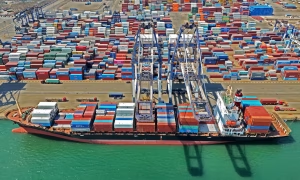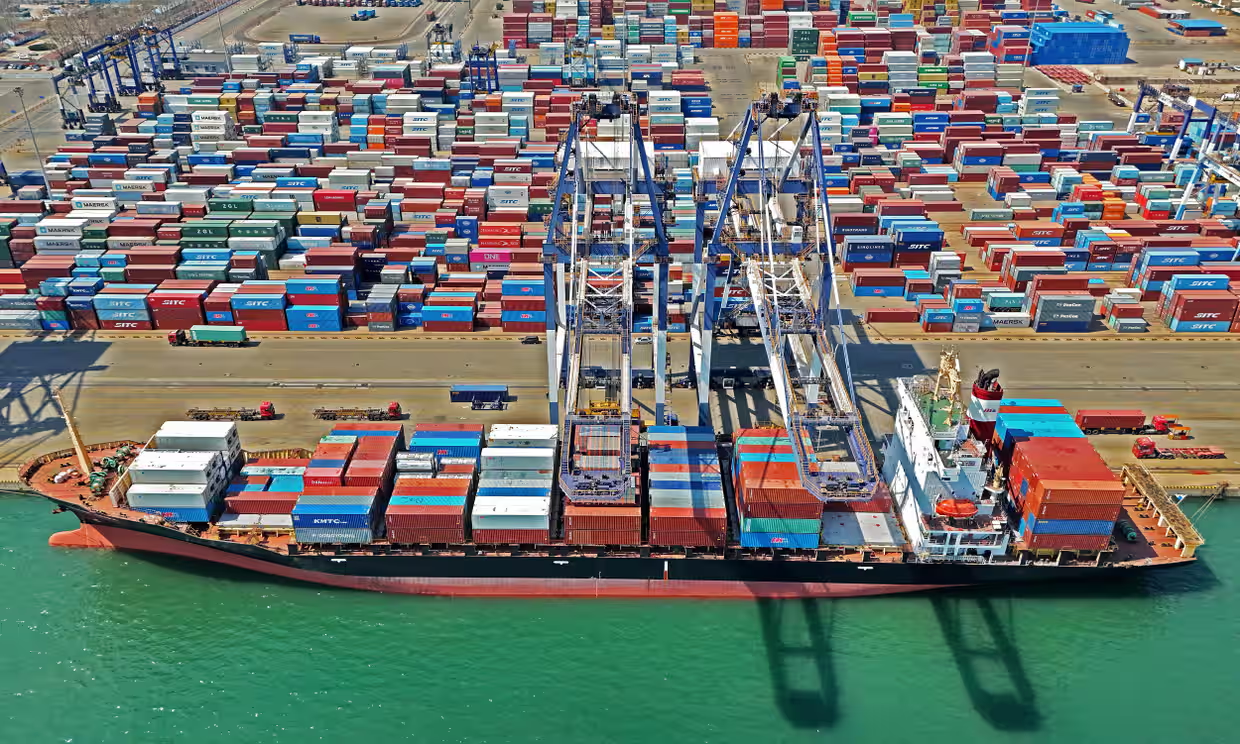04/29/2025
The U.S. has softened its controversial port fee plan targeting Chinese-built and Chinese-operated vessels after fierce opposition from shipping groups and businesses, but the penalties could still cost the industry up to $23 billion annually, analysts warn.

A cargo ship docked at a container port in Yantai city in eastern China’s Shandong province last month. Photograph: AP
Under the Trump administration’s updated plan, fees will now be calculated based on cargo weight or container count—18pernettonor120 per container—instead of flat rates per port call. This means a large container ship carrying 15,000 TEUs could face fees of 1.8millionpervoyage∗∗,downfrominitialproposalsof∗∗3.5 million per docking.
The changes come after warnings from U.S. industries that the original fees would raise consumer prices, hurt exports, and threaten dockworker jobs. The final rules exempt:
-
Empty bulk carriers (critical for U.S. agricultural exports).
-
Great Lakes, Caribbean, and intra-U.S. territory routes.
-
LNG carriers (delayed for three years).
Trade War Escalation
The fees, set to begin in October 2025, are part of a broader effort to counter China’s dominance in global shipbuilding—where it produces over 50% of the world’s vessels. U.S. Trade Representative Jamieson Greer stated the move will “reverse Chinese dominance and boost demand for U.S.-built ships,” though America currently accounts for less than 1% of global shipbuilding.
Industry Concerns Remain
While the scaled-back fees ease some pressure, shipping giants like Maersk and MSC—which rely heavily on Chinese-built vessels—warn of higher operational costs that could ripple through supply chains. Analysts estimate the fees could still disrupt 20% of U.S. port traffic, forcing carriers to adjust routes or pass costs to consumers.
What’s Next?
-
Waivers available for shipowners who order U.S.-built vessels.
-
New tariffs proposed on Chinese ship-to-shore cranes and cargo equipment.
-
Long-term impact: Experts say rebuilding U.S. shipbuilding capacity could take decades, leaving global trade vulnerable to further tensions.
“This isn’t just a U.S.-China issue—it’s a shockwave for global shipping,” said a leading supply chain analyst. “The $23 billion question is: Who will pay the price?”
Stay updated with the latest maritime trade policies at MaritimEducation News

